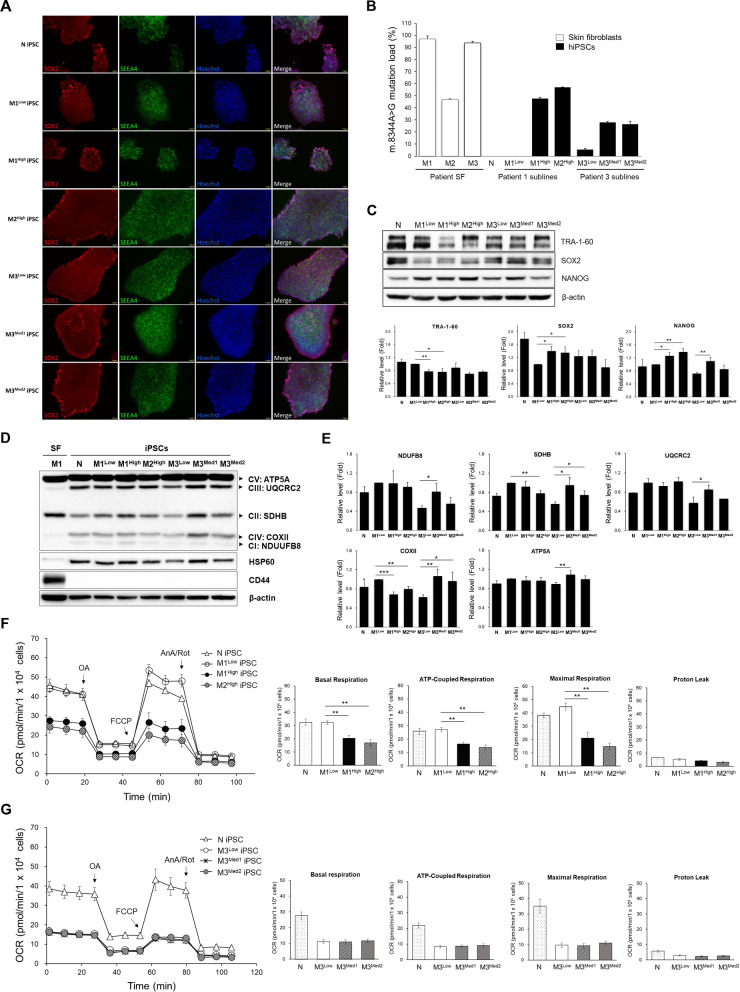Fig. 1.
Effect of the m.8344A > G mutation on mitochondrial bioenergetic function of MERRF-iPSCs. A Characterization of all MERRF-iPSCs lines by the immunofluorescence staining with pluripotency markers, SOX2 (red), SEEA4 (green) and Hoechst 33342 (blue). Scale bars, 100 μm. B Preservation of the heteroplasmy levels of the m.8344A > G mutation in MERRF-iPSCs. The proportion of mtDNA with the m.8344A > G mutation was quantified by PCR–RFLP in the skin fibroblasts from patients with MERRF syndrome, normal (N) and MERRF-iPSCs sublines. C The protein expression patterns and quantification of stemness genes in normal and MERRF-iPSCs lines analyzed by Western blots. β-actin was used as the internal control. D The protein levels of some subunits of respiratory enzyme complexes in MERRF-iPSCs were analyzed by Western blot. E Comparison of the OXHPOS protein expression levels in different MERRF-iPSCs. Quantification of the proteins in Western blots was normalized with β-actin. All the data are expressed as the fold change of that of control (M1Low iPSCs). F The representative data showing the oxygen consumption rate (OCR) in normal (N), M1Low, M1High and M2High iPSCs lines. OCR was analyzed by a Seahorse XFe24 extracellular flux analyzer after sequential injection of 1 μM oligomycin A (OA), 0.5 μM FCCP, and 2.5 μM antimycin A plus 2 μM rotenone (AA/Rot), respectively. Quantitative data of the bioenergetic parameters including the basal respiration rate, maximal, and ATP-coupled mitochondrial respiration rates of MERRF-iPSCs. G OCR and quantitative data in M3 iPSCs sublines (M3Low, M3Med) as compared with those of N iPSCs. Data are presented as mean ± SEM, n = 3. *p < 0.05; **p < 0.01; ***p < 0.001

